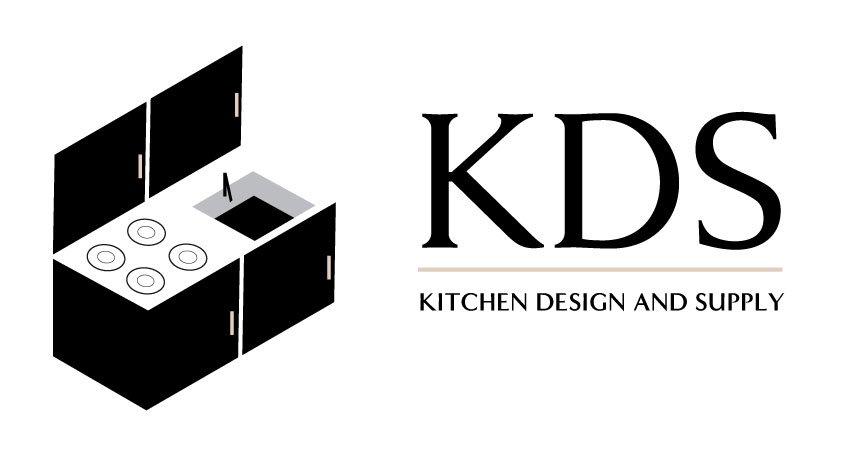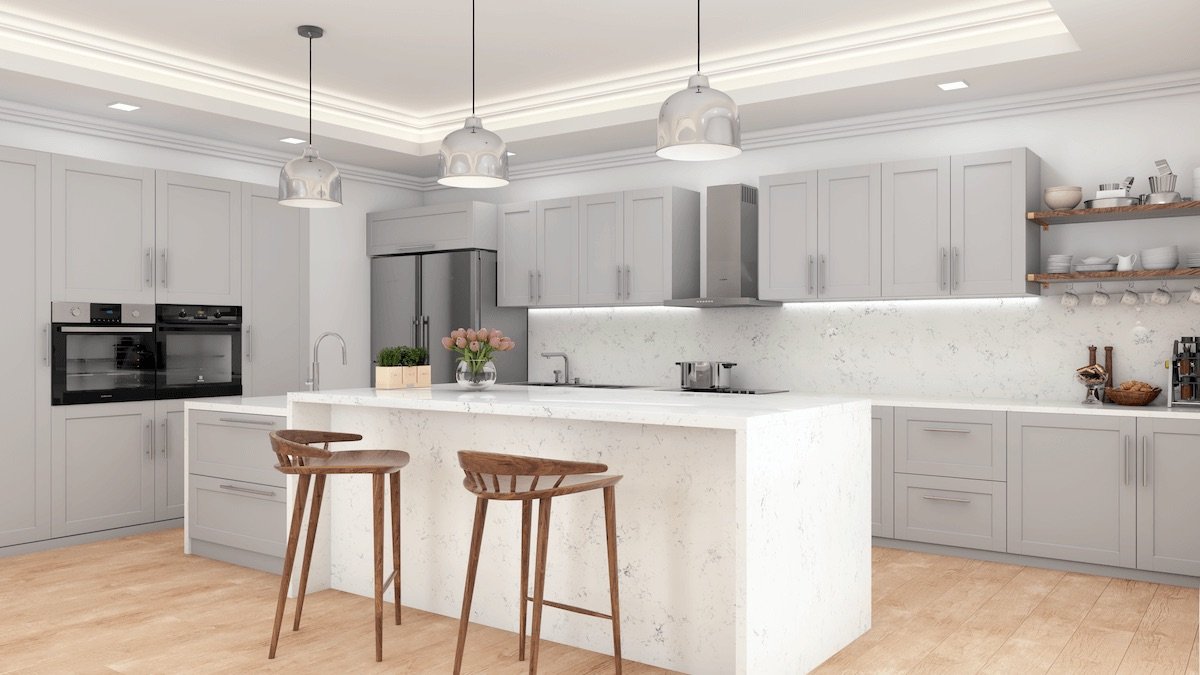Kitchen Island Design Ideas
Hob, Sink, or Dining Space – Which is Right for You?
The kitchen island has become the heart of modern kitchens, transforming from a simple countertop into a multifunctional hub that elevates both style and practicality. Whether you're renovating your kitchen or designing a new one, deciding how to use your kitchen island—whether for a hob, sink, or as a dining/gathering space—is a critical choice. Each option brings unique benefits and challenges, impacting how you cook, clean, and connect with others in your home.
In this comprehensive guide, we’ll break down the pros and cons of installing a hob in a kitchen island, a sink in a kitchen island, or using it as a kitchen island dining space. By the end, you’ll have a clear understanding of which option aligns with your lifestyle, budget, and kitchen goals. Let’s dive in!
Why a Kitchen Island Matters in Modern Homes
A kitchen island is more than just extra counter space—it’s a design statement and a functional powerhouse. According to a 2024 survey by Houzz, over 60% of homeowners renovating their kitchens included an island, citing its ability to enhance workflow, storage, and social interaction. But with so many possibilities, how do you decide whether to install a hob, sink, or keep it as a dining/gathering space?
Each choice shapes how your kitchen functions and feels. A hob in a kitchen island turns it into a cooking station, perfect for foodies who love to entertain. A sink in a kitchen island streamlines cleanup and prep, keeping you connected with guests. Using it as a kitchen island dining space creates a cosy, communal vibe for meals and gatherings. Below, we’ll explore the pros and cons of each, but first, let’s consider what makes a kitchen island so versatile.
The Versatility of a Kitchen Island
Before we dive into the specifics, let’s talk about why kitchen islands are so popular. They offer:
Extra Counter Space: Perfect for meal prep, baking, or hosting buffet-style gatherings.
Storage Solutions: Cabinets and drawers can house appliances, utensils, or pantry items.
Social Hub: Islands bridge the gap between cooking and living spaces, making them ideal for open-plan homes.
Design Flexibility: From sleek modern designs to rustic farmhouse styles, islands fit any aesthetic.
But the real question is: how do you maximise your island’s potential? Let’s break down the three main options.
Option 1: Installing a Hob in a Kitchen Island
What is a Hob in a Kitchen Island?
A hob in a kitchen island refers to placing a cooktop (electric, induction, or gas) directly on the island, turning it into a central cooking station. This setup is popular in open-plan kitchens, where the cook can face guests or family while preparing meals.
Why Choose a Hob in a Kitchen Island?
Imagine sizzling stir-fry or flipping pancakes while chatting with friends seated at the island—it’s a chef’s dream! A hob in a kitchen island creates an interactive cooking experience, making it ideal for those who love to entertain. Plus, it frees up perimeter countertops for other tasks, like chopping veggies or rolling dough.
Pros and Cons of a Hob in a Kitchen Island
Here’s a detailed look at the advantages and drawbacks:
Pros:
Interactive Cooking: The cook can face guests, making meal prep a social event.
Space Efficiency: Frees up other countertops for prep or appliances.
Sleek Aesthetic: Integrated downdraft ventilation eliminates the need for bulky overhead hoods.
Versatility: Can double as a prep area when not cooking.
Modern Ventilation: Pop-up or downdraft vents maintain an open, airy look.
Cons:
Safety Risks: Hot surfaces are a concern, especially with kids or pets.
Ventilation Issues: Downdraft systems may not capture odours or smoke as effectively as traditional hoods.
Messy Cleanup: Grease and splatter can make the island less inviting.
High Installation Costs: Requires gas or electrical lines, adding to renovation expenses.
Reduced Counter Space: Pots and pans can crowd the island during cooking.
Who Should Choose a Hob?
A hob in a kitchen island is perfect for:
Avid cooks who prioritise interactive meal prep.
Households without young children or pets.
Kitchens with ample ventilation solutions (e.g., downdraft systems or nearby windows).
Those willing to invest in high-end appliances and installation.
Option 2: Installing a Sink in a Kitchen Island
What is a Sink in a Kitchen Island?
A sink in a kitchen island turns the island into a prep and cleanup hub, often paired with a dishwasher or drying rack. It’s a popular choice for those who want to stay engaged with family or guests while washing dishes or soaking veggies.
Why Choose a Sink in a Kitchen Island?
Picture this: you’re rinsing salad greens while your kids do homework at the island or scrubbing pots while catching up with guests. A sink in a kitchen island keeps you connected to the action, streamlining your workflow without sacrificing social time.
Pros and Cons of a Sink in a Kitchen Island
Here’s what to consider:
Pros:
Social Interaction: Stay engaged with others while prepping or cleaning.
Efficient Workflow: Centralises cleanup and prep tasks.
Stylish Design: Farmhouse or undermount sinks add a chic touch.
Prep Hub: Pairs well with dishwashers or garbage disposals for seamless functionality.
Plumbing Integration: Simplifies connections for dishwashers.
Cons:
Water Damage: Splashing can harm countertops or nearby items.
Plumbing Costs: Running water and drainage lines are pricey.
Visible Clutter: Dirty dishes are on display in an open layout.
Limited Counter Space: Sink and drying areas reduce usable surface.
Maintenance Needs: Regular cleaning prevents stains or limescale buildup.
Who Should Choose a Sink?
A sink in a kitchen island suits:
Busy households that prioritise efficient cleanup.
Social butterflies who want to stay connected while working.
Kitchens with space for plumbing and a dishwasher nearby.
Those who love stylish sink designs, like farmhouse or stainless steel.
Option 3: Using the Kitchen Island as a Dining/Gathering Space
What is a Kitchen Island Dining Space?
A kitchen island dining space is a versatile, fixture-free island used for casual meals, socialising, or even as a workspace. It’s ideal for open-plan homes where the kitchen doubles as a living area.
Why Choose a Kitchen Island Dining Space?
If your kitchen is the heart of your home, a kitchen island dining space makes it a gathering spot. From family breakfasts to wine-and-cheese nights with friends, this setup fosters connection without the hassle of permanent appliances.
Pros and Cons of a Kitchen Island Dining Space
Here’s the breakdown:
Pros:
Social Hub: Perfect for casual meals, game nights, or homework sessions.
Multifunctional: Doubles as a workspace or buffet station.
Max Counter Space: No fixtures mean more room for projects or serving.
Clean Aesthetic: A clutter-free island looks sleek and inviting.
Budget-Friendly: No plumbing or electrical work needed.
Cons:
Limited Functionality: Lacks cooking or cleaning capabilities.
Clutter Risk: Can become a dumping ground for keys, bags, or mail.
Seating Challenges: Bar stools may not suit long meals or young kids.
Surface Wear: Spills or scratches can damage delicate countertops.
Space Conflicts: Dining use may compete with prep needs during busy times.
Who Should Choose a Dining Space?
A kitchen island dining space is ideal for:
Families or entertainers who prioritise social gatherings.
Small kitchens need flexible, multipurpose surfaces.
Budget-conscious homeowners avoiding costly installations.
Those who prefer a minimalist, open aesthetic.
How to Choose the Right Option for Your Kitchen
Choosing between a hob, sink, or dining space depends on your lifestyle, budget, and kitchen layout. Here are some questions to guide your decision:
How do you use your kitchen? If you’re a passionate cook, a hob in a kitchen island might be your top pick. If cleanup is a priority, a sink makes sense. For social butterflies, a dining/gathering space is unbeatable.
What’s your budget? A dining space is the most cost-effective, while hobs and sinks require significant plumbing or electrical investments.
Who uses the kitchen? Families with young kids may avoid a hob for safety, while empty nesters might love the sleek look of a sink.
What’s your aesthetic? A hob or sink can look modern and functional, while a dining space offers a timeless, open vibe.
Practical Tips for Designing Your Kitchen Island
No matter which option you choose, these tips will help you create a functional and stylish kitchen island:
Choose Durable Materials: Quartz or granite countertops resist stains and scratches, ideal for hobs, sinks, or dining spaces.
Plan for Storage: Add drawers or shelves to keep your island clutter-free.
Optimise Seating: For dining spaces, ensure comfortable stools and enough legroom (300mm of overhang).
Consider Ventilation: For hobs, invest in a high-quality downdraft system or ensure nearby windows for airflow.
Protect Surfaces: Use cutting boards or trivets to prevent damage, especially for dining spaces or sinks.
Conclusion: Make Your Kitchen Island Work for You
Your kitchen island is a blank canvas, ready to reflect your unique needs and style. Whether you opt for a hob in a kitchen island for culinary flair, a sink in a kitchen island for efficient cleanup, or a kitchen island dining space for unforgettable gatherings, the right choice depends on how you live and cook. Weigh the pros and cons, consider your budget, and don’t be afraid to get creative—your dream kitchen is within reach!




